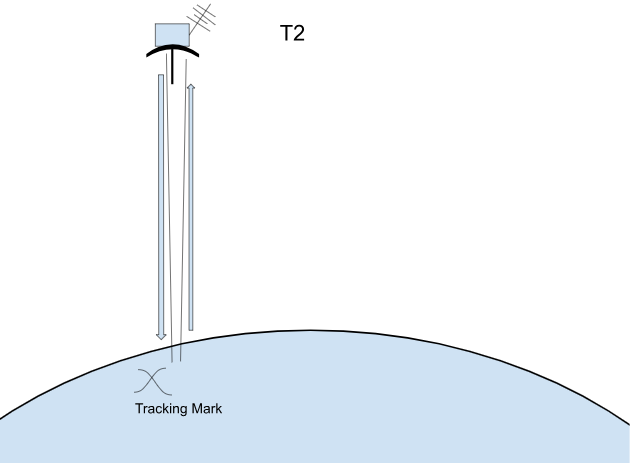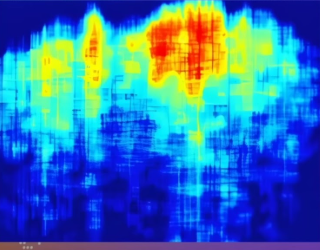Follow-Up to "Is There A City Under The Pyramids?"
- Jason Pluebell
- Apr 17
- 4 min read
This is a follow-up to my other article, "Is There A City Under The Pyramids?" Here I am going into more detail on the operations of Synthetic Aperture Radar Doppler Tomography, the issues of the techniques used in the report, and including my personal thoughts. I would highly recommend reading that previous article for some context. https://www.ptequestionstoeden.com/post/is-there-a-city-under-the-pyramids
On March 15, at a conference titled "Giza: The Pyramids and the Temporal Gateway", a team of researchers revealed some discoveries. A team led by Filippo Biondi, who worked at the Department of Electronic Engineering in Glasgow but resigned from his position, and Corrado Malanga, a Chemist at the University of Pisa, revealed that by using a mixture of Sythetic Aperture Radar and Doppler Tomography were able to map out about 2km under the Khafre pyramid of Egypt. They said they saw 8 pillars surrounded by spiral staircases that go down 648 meters and connect to "two large cubic structures measuring about 80 meters per side."
Follow-Up Explanation
Visual of Synthetic Aperture Radar
In the previous part, I did not go into crazy depth on how SAR works, so I'll include the diagram above to help you understand. The T1 and T2 represent the different times the energy burst is emitted. A satellite with an antenna emits an energy burst towards the Earth that is then reflected to a receiver that records the data. This technique is mainly used for tracking ground movements and mapping out marshlands and water bodies. The basic diagram shows how one burst travels to Earth, reflects off the surface, and returns to the receiver. The next slide shows a later time when Earth has moves a little bit. The mark that is being tracked has now moved, and the data can be used to determine the surface movement and structure. This diagram is very basic.
Visual of Doppler Tomography
A device or source emits waves through a material; these waves travel through it and interact with different structures and substances inside. A receiver then senses the surface vibrations of the object and records the data. As the waves pass and reflect off material inside the object, certain Doppler Effects are attributed to them and are used for mapping. The data is used to determine the structure, material, or movements within something. The point is that there must be detectable waves present for DT to be reliably used.

Doppler Tomography is often used for detecting the movement of blood in veins, aswell as mapping out magma chambers (figure above). When mapping chambers, the wavelength of the Seismic waves of the Earth is similar (50-100 meters) to the ones emitted by the chambers, so they can be used to detect and map the chambers.
Theory of Operation: Synthetic Aperture Radar Doppler Tomography
Here is the theory of operation behind Synthetic Aperture Radar Doppler Tomography. The Synthetic Aperture Radar is used to detect the surface vibrations of the Khafre pyramid and the Earth surrounding it. Then, Doppler Tomography uses the vibrations to reconstruct the area underneath the pyramid. As we will see shortly, there are big issues with mixing these techniques.
Issues With The Technique
Synthetic Aperture Radar is not purposed for mapping out underground structures, as mentioned earlier, it is mainly used for tracking surface movements and mapping out bodies of water. SAR is also not even capable of penetrating past a few centimeters of limestone! Moreover, Doppler Tomography works for mapping Magma chambers because the wavelengths of seismic waves are similar to the ones from the chambers. The Giza Plateau, specifically where the Pyramids are, emits a frequency of about 12.5 kHz, which is equal to about a wavelength of 24cm. A PHD Physicist, Sabine Hossenfelder, says "it's unlikely they have a signal to begin with" and also questions the exclusive use of SARDT here and not in other research.
We also know a lot about the Giza Plateau. From here, I refer you to the previous post "Is There A City Under The Pyramids," where more detail is discussed. In short, the water bed of the Plataeu is higher than 2km, so a city would be under water, along with other issues such as known cave formations missing from the data.

In the figure above, we can see the issues with the SARDT technique. The SAR detects surface vibrations in its scans that are used to reconstruct the ground underneath via DT. But the Giza Plateau has seismic waves that are virtually useless for DT, in other words, nothing in the ground produces large enough waves to be used with DT, aswell as nothing producing waves separate (in the instance of magma chambers, the chambers themselves).
Personal Thoughts From a Biblical Worldview
In the previous article, I mentioned another person's interpretation of how the pyramids were built. I never mentioned my thoughts in reaction to these announcements. I do take into account the extreme precision of the pyramids' construction (some are listed in the previous article), and am open to the possibility of Pre-flood giants being the main agents responsible for the labor of constructing such things, and perhaps fallen angels or higher advancements being the reason of precision (Mainly because the construction techniques are not directly mentioened in Egyptain history, aswell as other ancient civilizations like the Mayans). I also hold strong to the view that they are post-flood structures, because although there is no direct mention (mainly in the case of the Mayans), there are hieroglyphs that display the building of their pyramid-temples. For the Egyptians, we have journals of workers and overseers of the labor of the Pyramid of Giza. So there is evidence that the Egyptians built them, and I hold strongly to that idea.
I would go into more detail on the flood, but this is not the post for that. I have a new series beginning that will cover the evidence of a recent global flood. And before you ask, yes, I believe there was a Global Flood and that the Earth is Young. Those Biblical views will be discussed at a later date, but for now, let's all look forward to a happy Easter, glorifying our Risen Saviour Jesus Christ!







Comments